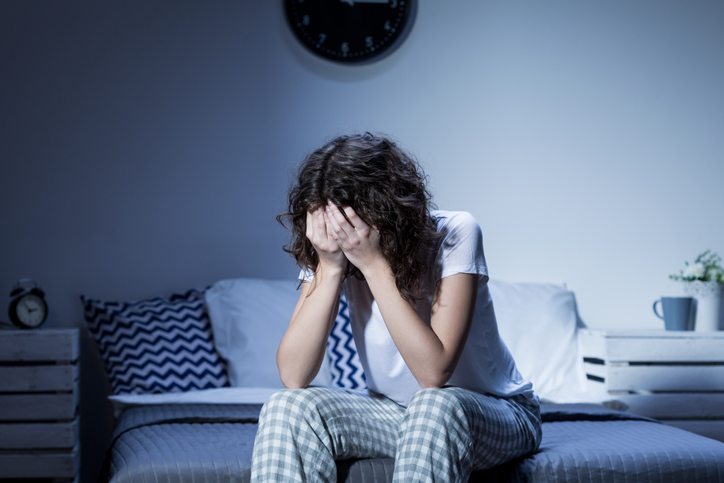Delayed Sleep Phase Disorder
Do you stay awake for a long time after going to bed at night? Do you prefer to go to bed later than usual and sleep in the next morning? If yes, then you could be suffering from a dysregulation of your biological clock, also called the circadian rhythm. There are different names given to the dysregulation of the circadian rhythm. One of them is delayed sleep phase disorder (DSPD).
Disorders like DSPD often go undiagnosed, considering that a large section of the young population suffers from the condition. Adolescents and teens are more likely to have DSPD when they call themselves night owls and prefer to sleep in the morning. Too often, when a person strays from his normal biological clock for a long time, it gets harder to return to the normal circadian rhythm.
What causes DSPD?
Although the exact cause is unclear, researchers believe that genetics has a role to play in DSPD. The disorder usually develops in late adolescence or early adulthood and disappears after a few years. Very few adults have been found to suffer from chronic DSPD.
DSPD happens, partly, due to a genetic mutation. It is the opposite of advanced sleep phase disorder (in which the person goes to bed and wakes up earlier than normal). People with DSPD usually go to bed in the early morning, between 1 am, and 4 am, and awaken later in the morning, between 8 am and 11 am. This is more common among socially active people, who feel more energetic during the evenings and late nights. In fact, those who burn the midnight oil and do not maintain the biological sleep cycle are a high risk of getting this disorder.
If DSPD exists alone with no other sleep disorder, people usually manage to get adequate sleep no matter when they get to bed. People generally stick to the late sleeping scheduling if it does not interfere with normal life.
If the person can make it to school or work on time, and still get enough sleep every night, it signifies that DSPD is not interfering with daily routines. In such cases, it may be advised to maintain the routine, as the circadian rhythm disorder might not be harmful.
Difference between DSPD and insomnia
Circadian rhythm disorders are often confused with insomnia, but they are very different from each other. People with circadian rhythm disorders like DSPD have a sleep schedule that may not be typical, but they do manage to get adequate sleep. People with insomnia, on the other hand, cannot fall asleep at any time during the day or night and fail to get adequate sleep.
Symptoms of Delayed Sleep Phase Disorder
The characteristics of DSPD distinguish it from other sleep disorders. Some of the symptoms are:
People with DSPD have a higher ability to sleep during the daytime, compared to those with a normal sleep schedule or those with insomnia. While normal people do not feel sleepy during the morning or afternoon, people with DSPD are able to sleep soundly even the sun is shining.
People with DSPD manage to fall asleep around the same time every night (or day), and if the person goes to bed around the time they feel sleepy, they find it easy to fall asleep rapidly. Children and adolescents with DSPD do not want to go to bed until they are sleepy, but the bedtime struggles disappear if they are allowed to stay up until the time they usually fall asleep.
People with DSPD usually sleep well when they are allowed to follow their own sleep schedule. They fall into a rhythm and often make up for lost sleep on weekends and during vacations.
DSPD is a chronic disorder whose symptoms must be present for at least three months at a stretch before a diagnosis can be made.
Severity of DSPD
Like most sleep disorders, DSPD is also classified according to severity. They are:
Mild: When the condition is ‘mild,’ there is usually a two-hour delay (compared to the normal sleep routine) in falling asleep, with little to no social or occupational disruption.
Moderate: The condition is moderate when there is a delay of three hours, with some amount of impairment.
Severe: The condition is classified as severe when there is a delay of four or more hours with severe social and occupational impairment.
Unlike what is usually thought by those around DSPD patients, this isn’t just a lifestyle problem. People with DSPD are unable to force themselves into a normal sleep routine. Even if they go to bed earlier, they will toss and turn until the time when they can naturally fall asleep.
Before seeking medical help, they usually try to change their sleeping schedule that would help them fall asleep earlier. Most of these methods are a failure in bringing about any change. Things like sleeping aids, alcohol, reading, and meditation aren’t usually successful. People with DSPD who tried using sleeping pills to fall asleep sooner report that it only makes them tired and relaxed, but not sleepy.
Treatment for Delayed Sleep Phase Disorder
There is no proper treatment method for DSPD, and doctors usually resort to a combination of methods to treat DSPD. The most common method is to gradually scale back the sleeping times of the patient until the desired timeframe is achieved. Once a proper has been achieved, it should be strictly maintained. This method is shown to be effective but must be very rigidly followed, because the new routine will fail if the person stays up until late even one day.
There are a few other methods too that are applied to treat circadian rhythm disorders. One of them is bright light therapy, in which the person is exposed to bright lights during early morning hours shortly after waking up while avoiding bright outdoor light during the evening hours. This has been shown to readjust the sleep-wake routine.
Delayed sleep phase disorder is not really a problem with most people. As long as the person gets the desired amount of sleep, there is no need for treatment. However, a doctor may be consulted if DSPD starts to interfere with daily life.













